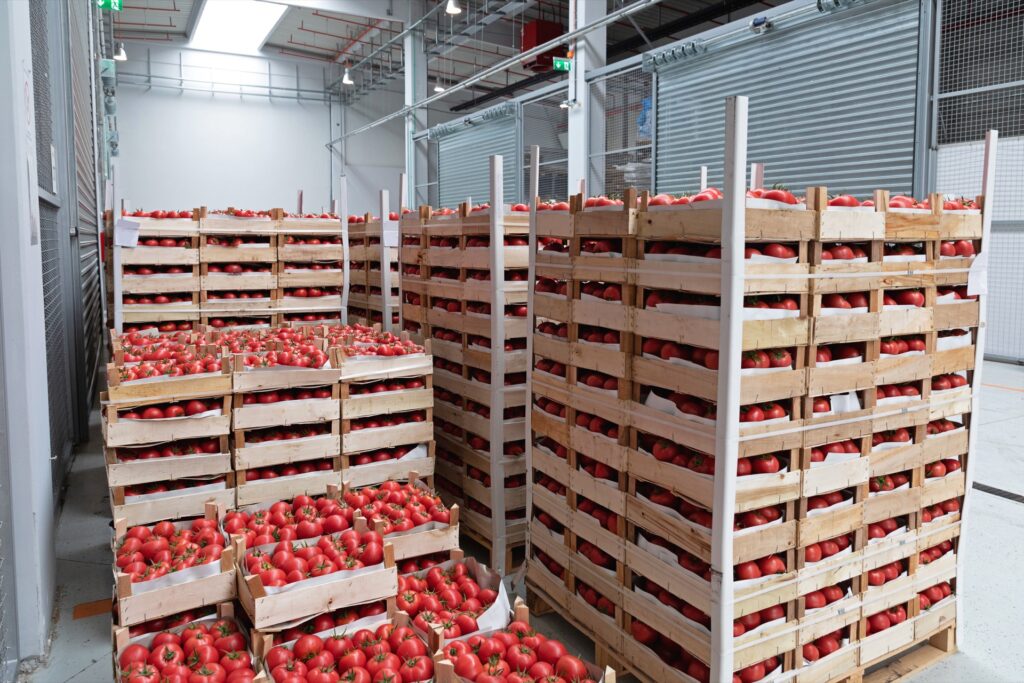When I was first asked to write a blog about the basics of how to prepare for importing food products into Canada, I was having a matcha mochi (a green tea ice cream wrapped by paper-thin glutinous rice sheet). Matcha mochi is a product of Japan, and I was enjoying it in an Indian restaurant in Vancouver. This is exactly why living in Canada is so amazing; we enjoy the privilege of consuming foods from all over the world.
While shopping for ethnic foods is quite easy in Canada, the process of importing foods into the country can be daunting. The first step is to obtain quick information about the food importation process, so here is the ABC of importing food into Canada and developing a PCP plan.
A: AIRS
I would like to start with AIRS. The Automated Import Reference System is easily accessible from the CFIA’s website. This database allows you to search for food regulatory requirements based on HS code (HS – Harmonized Commodity Description and Coding System), Latin name, or HS description.
No matter what you plan to import, the AIRS should be the first place to look for information regarding regulatory requirements.
B: Broker
How do you find the right HS code, you may ask? Well, a custom broker can be very helpful at this stage. An experienced custom broker should be able to provide an HS code based on the description of the food product, as well as based on other important business information such as duty and quota.
C: CBSA
For C, I choose the CBSA (Canada Border Service Agency) over the CFIA (Canadian Food Inspection Agency) because all the imported products will be declared first to the CBSA by the custom broker. The CFIA shares the declared information from the CBSA. For each shipment declared, a CBSA transaction number will be assigned.
This is important because the CFIA will later use the CBSA number as the identifier of the shipment. It is critical that the importer keeps the CBSA number on file. In addition, the CBSA does conduct their own inspection for security reasons, independently from the CFIA, and the consignee of the products will be responsible for the inspection costs.
C is also for customer complaints and corrective actions. Under SFCR, you must log all your customer complaints and document corrective actions. Refer to ‘J’ for SFCR requirements.
D: Declaration of Allergen
First and foremost, I want to emphasize that it’s essential to make sure the foreign supplier has declared all priority allergens on the Canadian food label. I cannot stress this enough as non-declared allergens are the leading cause of food recalls in North America and can cause severe, even fatal, reactions in sensitive people. Here’s a detailed list of Canadian allergens.
E: Eligibility
Before importing any food, you must first check the compliance of the supplier. The supplier must be able to manufacture the food following the same food safety standard as Canadian companies. If you are a food importer, ask yourself: does your supplier have a food safety program in place? Do they follow HACCP (Hazard Analysis and Critical Control Point)? Does your supplier understand the Safe Food for Canadians Regulations (SFCR)? Are they food safety certified?
F: Form No.1 Product Specification
To start preparing the importer PCP Plan (PCP – Preventive Control Program), it is a good idea to start with reviewing the product specifications. This document should be provided by your foreign supplier. The product specifications include key information, such as the ingredients list, the product nutritional information, the product shelf-life, how the food is packaged and information about storage requirements (example: food must be kept refrigerated).
This document is useful as it enables the hazard analysis and label review process, key requirements of SFCR. You may therefore review the food specifications carefully and request clarifications: “what preservative(s) are used in the product formulation? Are they on the list of permitted additives in Canada? Is the food subject to a standard of identity (ex: Canadian white flour is enriched).
 G: PCP Plan Guide for Canadian Importers
G: PCP Plan Guide for Canadian Importers
Since we have officially started talking about PCP plans, I want to mention that the CFIA offers a detailed guide for food importers.
H: Hazard Analysis
Based on the product specifications and manufacturing steps, the importer will then need to perform a food safety risk assessment of the imported food(s). This process is aligned with HACCP (Hazard Analysis and Critical Control Point). A food scientist is usually tasked with performing this review. The analysis identifies biological, chemical, and physical hazards that may cause illness or injury to the consumer.
The food safety professional will list pathogenic bacteria, parasites and viruses that may be present in the food. The food may also contain chemical hazards such as mycotoxins, heavy metals, drug residue, enterotoxins, pesticides or non-permitted food additives.
Lastly, physical hazards such as metal or glass may also contaminate the food and should be added to the PCP plan. Once the significant food safety hazards are identified, the food safety professional will determine the preventive controls that will be required to ensure safety. The importer will then perform verifications to ensure that the food safety controls (aka, the preventive controls) are implemented by the foreign supplier. Verifications take place during receipt of the food shipment as well as annually and must be documented.
I: Inspection
An inspection is always an option for controlling a hazard. The CFIA still perform random inspections on imported products upon arrival to Canada. Importers are advised to conduct their own inspections. So how do we know what to inspect?
J: Justice Canada – SFCR
As we have said previously, the Safe Food for Canadian Act and Regulations establishes the criteria for food safety and quality standards in Canada. You can access the regulations on the Justice Canada website.
K: Keep Updated
One way to ensure that you are up-to-date with the regulations is to register for a CFIA importer license at MyCFIA and to subscribe to CFIA email notifications. You will receive recall updates, industrial notifications and AIRS updates.
L: Labelling
One of the most complicated steps of the food import process is ensuring proper food labelling. Most pre-packaged foods in Canada must be labelled in French and English. I do recommend that you review the CFIA’s food labelling for industry guidelines.
M: MRLs
Maximum residue limits for toxins and chemical contaminants, along with other food safety standards are established by Health Canada, an agency independent from the CFIA.
N: Nutrition Fact Table and RDA
Another important piece of information is the Recommended Daily Allowance for Nutrients, which is used to calculate the RDA percentage in the Nutrition Fact Table (NFT). Refer to the CFIA nutrition labelling guidelines for the development of your food labels. Another handy tool to use is the USDA nutrient database. But do remember that we may have different RDAs here in Canada.
O: Online services
We are halfway through the alphabet. With ‘O’, I want to touch base on the MyCFIA portal, which you will access to apply for the SFCR license. Always make sure that the license you request covers all the commodities that you will be importing. Failing to do so will lead to automatic import rejection by CFIA.
 P: Packaging Material
P: Packaging Material
While food packaging is not directly in the scope of the SFCR in Canada, CFIA still requires that food packaging be safe. Division 23 of the Food and Drugs Act and Regulations, Section B.23.001 prohibits the sale of foods in packages that may impart any substance to the contents which may be harmful to the consumer of the food. You will want to ensure that the materials being used are food grade and suitable for the purpose (can the boxes withstand 2 months of ocean freight, are the jars freezer safe, and are the cans sealed properly?).
Q: Questionnaire
A well-designed supplier questionnaire is very handy to collect information from the vendor and evaluate compliance. To design your questionnaire, you may want to consult the CFIA foreign supplier food safety system checklist.
R: Ready-to-Eat
When we consider Ready-To-Eat (RTE) foods, we are talking about a higher-risk type of food product. Since the food will not be directly consumed without further processing for safety (referred to as a “Kill Step”), the risk level is much higher and, consequently, we will want to make sure that care has been taken to review controls to prevent contamination with harmful pathogens. To do this, a complete review of process controls is required and must be kept on file. The supplier’s HACCP plan or third-party audit report will be handy in determining whether process controls have been implemented.
S: Sampling Plan and Lab Testing
Following a sampling plan and testing the incoming food product is one way to improve our confidence in the food safety compliance of the food products being imported. A 5% sampling plan was established and followed by the CFIA for all fish products and may be suitable for perishable and high-risk foods. When doing sampling, we want to make sure the process is random and representative.
T: Traceability
I feel guilty to put traceability so low on the list as it’s one of the pillars of SFCR, but here it is. It answers two questions: where is the origin of the food and where will it be sold to? Under SFCR, the Canadian importer is required to trace one step back and one step forward. This is needed in the event of a food recall. You will need a Recall Plan if you import food into Canada.
U: Unpermitted Additives
What starts with a U and is relevant to the topic? Luckily, I haven’t talked about additives. In Canada, food additives that are allowed in food are outlined in the lists of permitted food additives (there are 15 lists to be exact).
V: Verification
PCP plan verifications are a process that occurs during each receipt of a food shipment and annually. It ensures that food safety controls are documented as per the plan and that food safety criteria are met. It’s also designed to ensure that the PCP plan is up-to-date and corrective actions are taken if the supplier does not meet food safety requirements. Based on risk and your annual gross revenue, the CFIA may contact you and audit your PCP importer plan. Failure to maintain a PCP plan for all imported food products may result in the suspension of your SFCR importer license.
W: Warehouse, Transportation, and Further Processing
When creating a PCP plan for import, keep in mind that it is not only the product itself you need to control, but also the hazards that may occur through the supply chain. How do you control the cold chain? Do you have an HACCP plan for your warehouse? And if you need to further process the imported food, is the food facility in Canada federally licensed? You should know answers to these questions before you import the food.
X: X-Ray and Metal Detector
It is a good idea to check if your vendor has a metal detector or X-ray technology to control hazardous foreign materials that may be in the food product. Large food retailers have a zero defect for foreign materials in food policy and will expect your suppliers to have a robust HACCP plan.
Y: Your Responsibilities
As we are getting to the end of our list, I have to remind you that, as a food importer, you are ultimately responsible for the safety and the quality (grading standard and nutritional quality, etc.) of the foods you import into Canada.
Z: Zoonotic hazards – Zoosanitary Certificate
For animal-based products, sometimes a zoonsanitary certificate will be required, as well as an import permit. Pay extra attention to the requirements outlined in the AIRS to avoid rejections and delays.
About the Author:
Sean Xia is currently working in the seafood industry as an operations manager. With a master’s degree in food science, strong quality assurance skills and 7 years of hands-on experience in the quality assurance and operations field, Sean provides insights into the development and maintenance of food safety management systems from an operational point of view.
Sean believes that a successful quality assurance system must be well integrated to the business supply chain and inventory management systems. Combined with the adoption of lean manufacturing principles, a quality/food safety management system should help improve the company’s objectives while meeting regulatory requirements.
With years of experience working with the Canadian Food Inspection Agency (CFIA), Sean understands the principles of developing and implementing an effective preventive control program. Sean is familiar with HACCP and GFSI certification schemes, as well as Kosher, Organic, Oceanwise and BAP certification requirements.


 G: PCP Plan
G: PCP Plan  P: Packaging Material
P: Packaging Material


